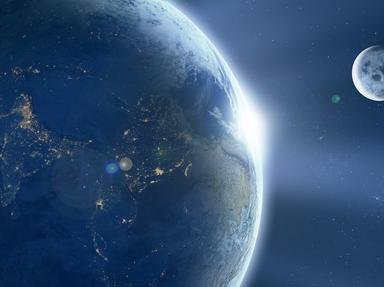
It's Your Planet Trivia Quiz
There are over 140 named moons orbiting our solar system's five outer planets (Mars, Jupiter, Saturn, Uranus & Neptune). Can you match these ten moons with the correct planet?
A matching quiz
by reedy.
Estimated time: 3 mins.
- Home
- »
- Quizzes
- »
- Science Trivia
- »
- Our Solar System
- »
- Moons
